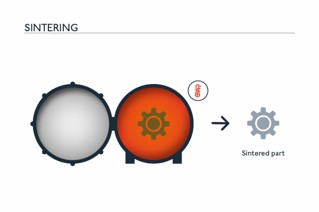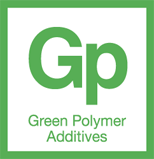Debinding
In acetone for 6-36 hours with slow ramp to 40-42 °C. Debinding time depends on size, geometry and x-y wall thickness of part.
Part placement on tray in debinding station and tray type are very important. Perforated trays are best for debinding and allow maximum acetone penetration and circulation in part for optimum debinding. Slight stirring or agitation of acetone in debinding vessel should be carried out to allow uniformity of solvent media. This prevents pressure build-up by removed binder that might cause cracking or warping of part after debinding.
After the debinding process, we now have a brown part with a residual binder content of approx. 50%.

Sintering
After debinding, sintering takes place, during which the brown compact is heated in a furnace. During sintering, the metal particles in the brown compact are fused, creating a dense and solid structure. Sintering takes place under controlled conditions such as temperature and atmosphere to achieve the desired material properties. The brown compact shrinks during sintering, resulting in the final dimensions of the metal part. The shrinkage rate of 316L, for example, is approx. 16%.

After sintering, the parts may undergo a series of post-processing steps to remove burrs or excess material, polish or coat the surface and perform quality checks. The parts are checked for dimensional accuracy and strength and, if necessary, reworked to meet the required specifications.

 Show Image Video
Show Image Video

